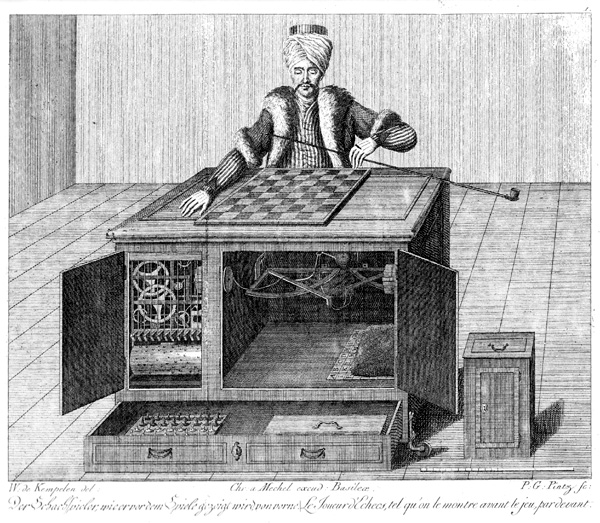Move over Rosie from
The Jetsons, you weren't the first robot to capture the heart of thousands. Long before
R2D2
and
Roombas
there were automata, androids which operated on clockwork mechanic. Automata have existed for centuries and although they operate on primitive mechanics, they are quite the genius little devices. Eerie, yet enchanting, the surviving automata still have the same effect on viewers today
Automaton building was not a career but more of a hobby. Usually the creators were mostly self-taught and their talents could earn them royal favor. King Frederick of Prussia was enamored with the mechanical toys and had quite the collection. Louis XV was quite fond of a mechanical duck which would eat a grain and consequently poop out a very lifelike duck defecation. A musician automaton that was given to
Marie Antoinette miraculously survived the Revolution enough to be repaired in the 19th century and is still in working order (video below). Antoinette's mother, Empress Marie Theresa was presented with one of the most famous or infamous automata of the century, The Turk. This life-sized android could play chess against human opponents and was rarely defeated. Ben Franklin and Napoleon Bonaparte both lost to The Turk although I can only imagine one throwing a temper tantrum about it. However, as many suspected, The Turk was only a partial automaton and a human operator squeezed into the machine to act as the brains of the operation.
What is perhaps the most interesting about these 18th century androids is that although they could perform a task, their many purpose was to entertain. So much detail went into their creation. A scribing boy thoughtfully moves his eyes while writing a poem. An artist creates portraits in pencil and pauses to blow away the graphite dust. A silver swan drifts through glittering water, preens itself then catches a fish. It is easy to imagine a full room of silken courtiers gasping in awe at the robotics and yet those surviving automata on display in museums seem to have the same effect on contemporary viewers. Their entertainment value is timeless, see for yourself:
The Silver Swan of Bowes Museum
Automata of Pierre Jaquet-Droz(Trailer en francais)



Fascinating post! Also, I have to admit, the Marie Antoinette automaton is a little creepy from a modern perspective - her jerky movements are a little zombie-like. (What an appropriate post for Halloween! Ha ha!)
ReplyDeleteWow! I've always known about these sorts of things, but it's so awesome to see the videos of them in action. Thanks so much for sharing them! My husband also enjoyed watching them :D
ReplyDeleteThese are incredible - and spooky! The eyes of the boy drawing the dog - eee! And I wonder how the swan's neck is constructed.
ReplyDeleteThanks for posting this, I didn't know about that kind of thing yet.
A pitty they could not wait until the 19th century, it does not seem right somehow. At least it is the late 18th century, time of the industrial revolution.
ReplyDeletehttp://woodsrunnersdiary.blogspot.com/
@M, Oh good, that's what I was going for! Not directly Halloweenish, but in the spirit!
ReplyDelete@Le Loup, Some think the 19th century is the automata century (I find the 18th c ones too interesting to agree). Many more survive from then, there's youtube videos of fortune teller automata, and of course they fit in nicely with the whole "steampunk" thing.
I'm glad you all find them as fascinating as I do!
I find this very fascinating! Especially since I had only read about them and never seen them. One has to take into account the engineering and craftsmanship that went into each automata.
ReplyDeleteI don't see what's wrong with having them in the 18th century (since they also were in previous centuries, but I'm sure not as exquisite). Many of the technologies that came into utilization in the 19th century were invented or at least experiemented with in the 18th century, from the steam engine to the roller skate.
I am the proofreader from Hell, and I do not think you mean "duck deification." Defecation, more likely.
ReplyDeleteThank you for the catch, Mary!
ReplyDelete